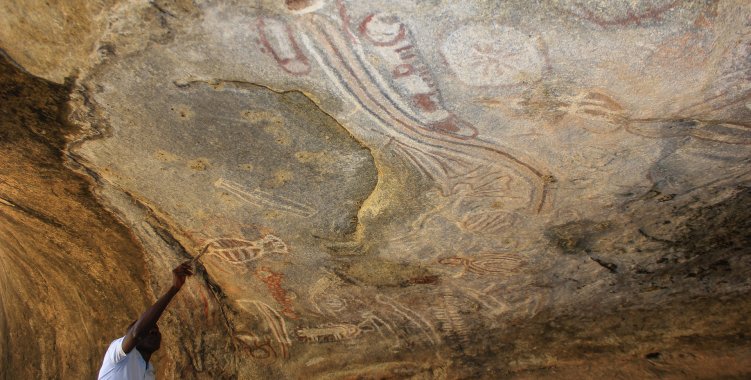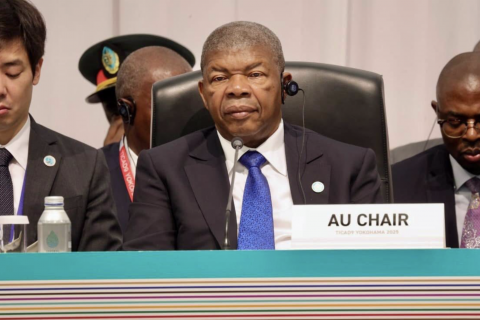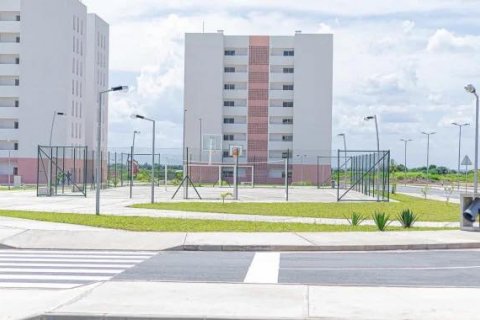It is said that they "fell from the sky" - the meaning of Tchitundo-Hulo in the local language - and are located about 130 kilometers from the seat of Virei municipality, Namibe province, southern Angola, in a desert region to which access by following a sandy path.
All around, the scenery is sandy and the terrain is dry and stony. Some goats nibble on stunted bushes and the 'sambos' (circular corrals closed with branches) of the Mucaba shepherds who live there are visible, invisible but vigilant, always attentive to visitors.
"Here, no one thinks they are alone, they are always watching. And woe betide the outsiders who come to visit the caves without introducing themselves. There were some tourists who came to visit the caves without warning, but they were not allowed to go ahead and had to turn back" , says Paihama Catenga, responsible for the area of culture and tourism at the Municipal Administration of Virei, who accompanied a team from Lusa to the site.
It is not known exactly who left the drawings, or why. Some resemble the shapes of animals, guessing fish and turtles, others are circles and abstract shapes that could be representations of the sky and the stars.
Experts estimate that the perpetrators were Khoisan or Cuisses-Tua, ancestral peoples who were already settled in southern Angola before the arrival of the Bantus, the majority ethnic group in the country.
The 'soba' Ananás, from Virei, says that it was his ancestors, "thousands of years ago", but adds that there are other theories.
"Some elders say that it was not made by man, that it is supernatural. When the whites came here and asked who made it, they said: we found it already like this, it came from God, it came from heaven", explains the representative of the traditional authorities.
Also because "the paintings were covered and no man paints to cover them up later", he argues.
The chief guarantees that before the place was respected, following the rules of the Mucubals, "but the current culture no longer follows the ancient ones", accelerating degradation due to the combined effect of climatic agents and human action.
The prehistoric drawings, of which there are more than a thousand, scattered between the interior of the two caves and the granite hill that make up the complex, began to be studied in the 1950s by the Portuguese geologist Camarate França.
But to this day its meaning remains an enigma and the decipherment may never happen given the risk of the engravings disappearing, whose access is not controlled and are exposed to the weather.
The lower cave (Casa Maior) is easily accessible and was once fenced off by the Angolan authorities, who want to elevate the complex to the status of World Heritage Site, as UNESCO requires free access.
The removal of the fence does not please Ildeberto Madeira, sociologist and member of the Association of Naturals and Friends of Namibe, who warns of the risks of destruction of ancient art, without protection to defend them.
"These paintings are over 2000 years old, they must be preserved", he appeals, arguing that access must be controlled.
"The oxen come everywhere, they go in there, touch them with their horns and destroy the paintings. We are in a place where the life of the people is the oxen pasture and the horns spoil", he exemplified.
In some places, the engravings appear already stained by contemporary inscriptions and there are also tourists and outsiders who remove the granite slabs, which come loose easily, to take paintings with them.
"I had information that tourists break stone slabs to remove the paintings and take them with them, as they are very easy to remove", laments the specialist, now retired.
Ildeberto Madeira points out that access to caves or protected heritage in other countries is very different and suggests that it could even generate revenue.
The head of culture and tourism at Virei, Paihama Catenga, also regrets that the heritage is not protected and agrees with the idea of sealing off the site.
He even claims that there were more engravings in the caves, but erosion, infiltration and water runoff and the wear and tear of time do not forgive.
"They really have to be protected", he exhorts.







